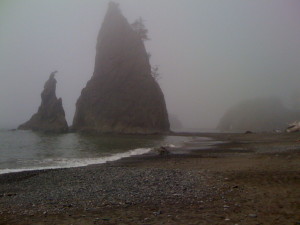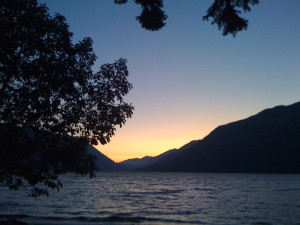Computer Music


This seminar is loads of fun to teach, because we usually choose a topic for the term that resonates with work we are doing. We wind up teaching what we like! This semester is no exception. In past incarnations of this class, we have said something like: The purpose of this class is to explore bold and exciting new musical applications of computers and digital technology. We still intend to do a lot of that this year, but the particular aspect we'll be exploring has to do with the creation of "soundscapes", or how we can employ various technologies to craft an immersive sonic environment, or at least do a decent imitation of one. We'll be focusing on both 'virtual' and 'real' versions, with a final section designed to meld the two into virtual/real hybrids (interactive spaces, enhanced acoustics, etc.).
We're also doing this class in conjunction with Ana-Maria Ochoa's class SOUND, THE SECULAR, THE SACRED. G4030 (Thursday, 9-10:50 AM). Ana-Maria's ethnomusicology course will be considering the socio-cultural contexts in which different senses of "space" are imbedded; we hope to stimulate cross-boundary inquiry into our notions of acoustic and constructed 'space'. Doesn't that sound like fun?!?
As part of our collaboration with Ana-Maria, we will be having several joint visitors to Columbia. Stay tuned for more details. We will also have several other guest speakers throughout the term. They will be listed on the course syllabus.
Although we will be doing a fair amount of computer-music programming
in the class using various languages, you should not
worry if you don't have
major computer-hacking skills: this is not intended as
a programming class! Of course,
along the way we will indeed introduce a number of contemporary computer
music languages and interesting software applications. Hopefully
you will find some of these intriguing and will want to learn
more about them. We will certainly be available to help work through
any problems you encounter as you explore these packages in more
depth. Just ask!
Here are a few links to software that we probably will be using in class:
Please let us know if you are having
problems gaining access to our facilities or getting equipment to work
for you. In general, if you are having difficulty
understanding the programming paradigms
we are using, or getting the hardware/software to work for you, be
sure to talk to us. We'll be happy to sit down and work through
any issues with you.
We'll try to keep up with linking in class patches and examples,
but we may fall behind. Yell at us when we do.
It's always a good idea to make an appointment to see me, even during my purported office hours, because I often have to run around campus like a maniac doing strange, computer-music stuff. If you need to contact someone at the CMC or Music Department using your actual voice, the relevant phone numbers are:
I say this every year, and generally people believe it (I think): by this point in your career the last thing you should be worrying about is a grade. The main thing is to find something that you'd really like to do and then do it. Please don't try to impress us with your consummate knowledge and skill, we are more impressed by people who do things. Honest!
Hope you enjoy the class!
